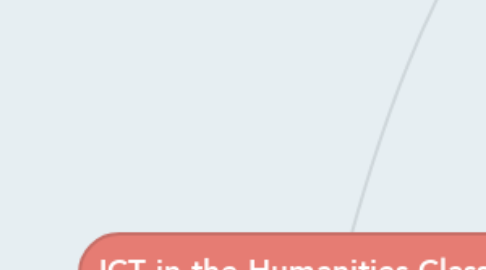
1. Critical theory and reflexive teaching ICT potentials
1.1. History/Civics/Economics
1.1.1. Development, implementation and social use of Technology as an area of inquiry. Reflecting on the social vs. tools/technology relationship; which influences which (Social/technological determinism).
1.2. Politics: Democracy and the Internet
1.2.1. Activity idea: Students to find a Social Media post from their feed that has a political focus.
1.3. Economics, Politics & Geography
1.3.1. Students to research use of Internet and practices within countries of varying GDPs or Post-Colonial status
1.4. Geography and Economics
1.4.1. Students to examine relations between technology use and carbon emissions (Gapminder)
1.4.1.1. Mindtools: Distributing cognitive technologies
1.4.1.2. AusVELS: Sustainability
1.4.1.3. SAMR (Puentadura, R): Redefinition
1.4.1.4. ICT in General capabilities: 'Create information products that demonstrate their understanding of concepts, issues, relationships and processes.' & 'Communicate locally and globally to solve problems and to share knowledge, understand the implications of the use of ICT and their social and ethical responsibilities as users of ICT'
2. Practical Implementations
2.1. Constructing timelines
2.1.1. Students to individually read an online timeline, and then collectively summarizing on a communal white/smartboard
2.1.1.1. SAMR (Puentadura, R): Modification
2.1.1.2. Mindtools: Knowledge construction, not reproduction
2.1.1.3. AusVELS: Use a range of communication forms (oral, graphic, written) and digital technologies (ACHHS214)
2.1.1.4. ICT in General capabilities: 'Create information products that demonstrate their understanding of concepts, issues, relationships and processes'.
2.2. Nearpod Feedback (John Hattie, Visible Learning for Teachers, 2009)
2.2.1. Using Nearpod to quickly attain quantitative data on where students are feeling competent to uncertain to help further reinforce what might need further clarification, especially before assessments.
2.2.1.1. SAMR (Puentadura, R): Augmentation
2.2.1.2. Mindtools: Distributing cognitive processing
2.2.1.3. AusVELS: An achievement standard describes the quality of learning (the extent of knowledge, the depth of understanding and the sophistication of skills) that would indicate the student is well placed to commence the learning required at the next level of achievement
2.2.1.4. ICT in General capabilities: 'Develop new thinking and learning skills that produce creative and innovative insights' & 'Develop more productive ways of working and solving problems individually and collaboratively'
